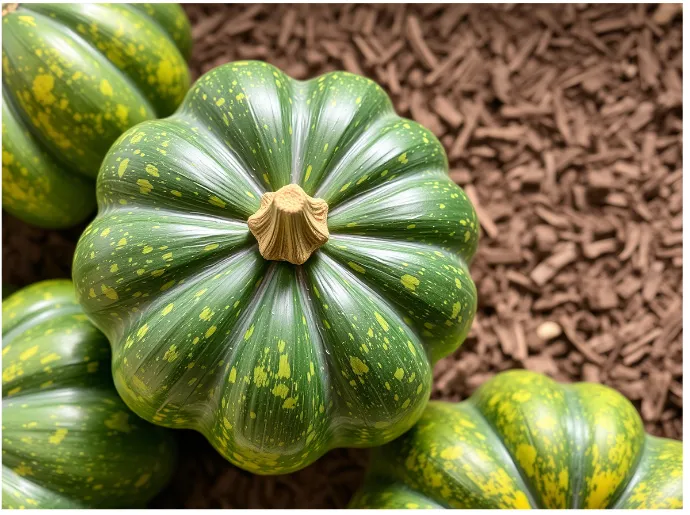
Squash farming in the Philippines is a profitable and sustainable agribusiness due to the high local demand and suitability to the tropical climate. With its nutrient-rich content, versatility in cooking, and long shelf life, squash is a staple crop in Filipino households and markets. However, selecting the best variety is crucial to maximize yield, resistance to pests and diseases, and overall market value.
This guide will help Filipino farmers identify the best squash varieties for commercial production, based on verified agricultural data and optimized for the Philippine climate.
Why Squash Farming is Profitable in the Philippines?
✔ High Demand in the Local Market – Squash is widely used in Filipino dishes like pinakbet, ginataang kalabasa, and bulanglang.
✔ Short Growing Period – Some squash varieties mature in just 2-3 months, allowing multiple harvests per year.
✔ Thrives in Tropical Climate – Squash grows well in warm and humid conditions, which are ideal for most parts of the Philippines.
✔ Low Production Cost, High Yield – With proper farming techniques, farmers can harvest 10-20 tons per hectare.
Best Squash Varieties for Commercial Production in the Philippines
Choosing the right squash variety is important for high yields, pest resistance, and good marketability. Here are the top varieties recommended for commercial farming in the Philippines:
1. Suprema F1 Hybrid Squash
✔ Yield Potential: 15-20 tons per hectare
✔ Growing Season: 70-85 days
✔ Best Climate: Warm and humid regions
✔ Key Features:
- High market demand due to its sweet taste and deep yellow-orange flesh
- Strong resistance to common squash diseases like powdery mildew and downy mildew
- Long shelf life, making it ideal for transport and storage
2. Atlas F1 Hybrid Squash
✔ Yield Potential: 12-18 tons per hectare
✔ Growing Season: 75-90 days
✔ Best Climate: Thrives in both dry and wet seasons
✔ Key Features:
- Uniform shape and size, perfect for commercial sale
- Thick, firm flesh, great for cooking and processing
- High tolerance to pests and fungal infections
3. Kalabasa NSIC RC12 (Open-Pollinated Variety)
✔ Yield Potential: 10-15 tons per hectare
✔ Growing Season: 85-100 days
✔ Best Climate: Prefers dry season planting (November to May)
✔ Key Features:
- Strong vines that can withstand harsh weather conditions
- Local variety developed for Philippine farming conditions
- Well-adapted to traditional backyard and commercial farming
4. Green Emperor Hybrid Squash
✔ Yield Potential: 14-17 tons per hectare
✔ Growing Season: 80-95 days
✔ Best Climate: Best planted from December to March for high yields
✔ Key Features:
- Dark green skin and deep orange flesh, making it highly attractive in the market
- Compact growth, ideal for farmers with limited land space
- Resistant to common viral infections in squash plants
5. Ilocos White Squash
✔ Yield Potential: 10-14 tons per hectare
✔ Growing Season: 85-100 days
✔ Best Climate: Thrives in hot, dry climates (Luzon, Visayas, and Mindanao)
✔ Key Features:
- Known for its firm, white flesh, commonly used for cooking and processing
- Highly resistant to extreme heat and common pests
- Popular in traditional markets and preferred by local consumers
Best Time to Plant Squash in the Philippines
- Dry Season Planting (November – May): Best for high yields and better fruit quality
- Wet Season Planting (June – October): Possible, but requires proper drainage and disease management
Step-by-Step Guide to Growing Squash for Commercial Farming
1. Land Preparation & Soil Requirements
- Squash grows best in sandy-loam soil with good drainage
- Maintain a soil pH level of 5.5 – 6.8
- Apply organic compost or chicken manure before planting for better soil fertility
2. Seed Selection & Planting
- Use certified seeds from reputable suppliers
- Direct seeding method: Sow seeds 1-2 cm deep and cover lightly with soil
- Spacing: 1.5 meters between rows and 75 cm between plants
3. Watering & Irrigation
- Squash needs moderate watering, especially during flowering and fruit development
- Use drip irrigation or furrow irrigation for best results
- Avoid overwatering to prevent root rot and fungal infections
4. Fertilization & Nutrient Management
- Apply NPK fertilizer (14-14-14) during early growth
- Switch to potassium-rich fertilizers (0-0-60) during fruit development
- Foliar sprays of calcium and boron help prevent fruit cracking and improve quality
5. Pest & Disease Control
- Common Pests: Aphids, squash bugs, fruit flies
Solution: Use organic insecticides like neem oil and practice crop rotation - Common Diseases: Powdery mildew, downy mildew, squash mosaic virus
Solution: Use resistant varieties and avoid overhead watering
6. Harvesting & Post-Harvest Handling
- Harvest when the skin hardens and the fruit reaches the desired size
- Store squash in a cool, shaded area to extend shelf life
- For long-term storage, keep at 10-15°C with 60-70% humidity
Estimated Profitability of Squash Farming in the Philippines
📊 Investment Cost (per hectare)
- Seeds: ₱5,000 – ₱15,000
- Fertilizers & Pesticides: ₱10,000 – ₱20,000
- Labor & Maintenance: ₱15,000 – ₱30,000
- Equipment & Irrigation: ₱20,000 – ₱40,000
💰 Potential Earnings (per hectare)
- Yield per hectare: 10-20 tons
- Market price per kg: ₱20-₱50/kg (varies by season and variety)
- Total Revenue: ₱200,000 – ₱1,000,000 per hectare
✔ Net profit depends on production costs, selling price, and market conditions
Final Thoughts: Choosing the Best Squash Variety for Success
Squash farming in the Philippines is a highly profitable agribusiness when the right variety and proper farming methods are used. Hybrid varieties like Suprema F1 and Atlas F1 offer higher yields, while open-pollinated varieties like Kalabasa NSIC RC12 are more affordable and suitable for small-scale farmers.
✅ Plan your planting season wisely
✅ Follow best farming practices for maximum yield
✅ Invest in quality seeds and pest management for disease-free production
With the right approach, squash farming can provide a stable income and long-term success for Filipino farmers.
📢 Ready to Start Squash Farming in the Philippines?
For quality squash seeds, expert farming tips, and agribusiness strategies, follow our blog and stay updated on the latest agricultural trends!

